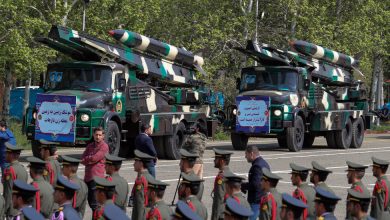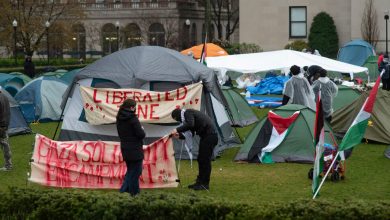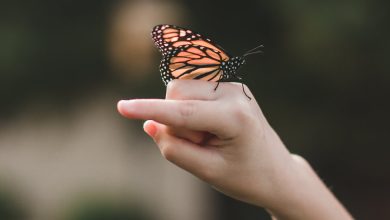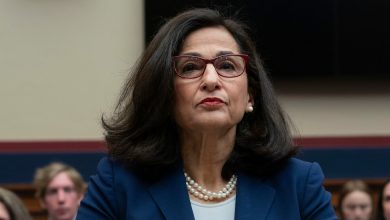Canada’s residential schools were a system of ‘cultural genocide,’ a commission found.

The investigation into Canada’s scandalous system of mandatory residential schools for Indigenous children was among the most comprehensive reviews in the country’s history, taking testimony from more than 6,000 witnesses and reviewing thousands of documents over six years.
And, in the end, the conclusion of the National Truth and Reconciliation Commission was unambiguous: “Children were abused, physically and sexually, and they died in the schools in numbers that would not have been tolerated in any school system anywhere in the country, or in the world.”
From the 1880s through the 1990s, the Canadian government forcibly removed at least 150,000 Indigenous children from their homes and sent them to residential schools to assimilate them into Western ways. Their languages and religious and cultural practices were banned, sometimes using violence. It was, the commission reported in 2015, a system of “cultural genocide.”
Because of the schools, generations of Indigenous children were raised by adults, including priests and nuns, who had little understanding of their roles, and many students developed mental health and substance abuse problems from the trauma they suffered at the schools.
The number of students who died at the schools is still a matter of historical research. But Murray Sinclair, a former judge, senator and head of the commission, said he estimates that the figure exceeds 10,000 children.
transcript
Searching for the Unmarked Graves of Indigenous Children
For more than a century, Indigenous children in Canada were forced to attend residential schools, where many endured abuse. Thousands were never seen again and survivors were long ignored. We followed a team of archaeologists who came to the Muskowekwan First Nation to search for the graves of these lost children.
“What residential school was, and still is, is a nightmare.” For more than a century, Indigenous children in Canada were taken from their homes and sent to residential schools to forcibly assimilate them into white society. And thousands were never seen again. Now, more than 20 years after the last school shut down, searches for the remains of these lost children are happening across the country. “There’s nothing on the surface, but once we interpret the data, we can see if we can find these children.” We followed a team of archaeologists who came to the Muskowekwan First Nation to investigate what lies beneath the ground. “There is unmarked graves there. They’re all over the place. But nothing has been done.” Here, some residential school survivors hope that scientific evidence will reveal to the rest of the world a truth they’ve long known. “These stories are real. I saw something in here. And people have never listened.” Harvey Desjarlais was taken to residential school when he was 6 1/2 years old. “And I remember being locked in the dorm. I cried so much because of the harshness. Small boys’ dorm — this is where we were kept. They shave your head, cut off your braids. Right here, a boy hung himself. I found him hanging. He wasn’ t hanging. He was laying there. He was already —” Generations of Indigenous children suffered physical and sexual abuse inside the boarding schools. They were established by the Canadian government and initially run by the Catholic Church. “This used to be the chapel over here. This is where we used to pray 10 times a day. They used to call us little savages. ‘You little savage. Your ceremonies, that’s paganism.’ That’s how they spoke to us.” After his years as a student, Harvey worked as the school’s caretaker for 22 years. Today, he still visits the grounds of the former school, even though it shut down in 1997. “I come here just about every day. I have a dream of elders. You know, like calling. And I know what they’re calling about. They’re our children.” “You look at your map. And you could just draw a circle so we could find out exactly where these graves are.” The First Nation has invited archaeologists to search for unmarked graves, and survivor testimony will be crucial. Elders have long shared stories of what happened at these schools but were rarely believed outside their community. “We lived on top of the graves for many, many years. But we couldn’t do nothing. There’s a big hill over here — all graves, all graves.” “About the researchers coming here, it’s been a long time coming.” Laura Oochoo is Harvey’s longtime partner. She also went to the Muskowekwan Residential School. “I’m at a place where I’m trying to understand, what’s this all mean for — for all of us right now? People are angry with the finding of our kids. This horror, it’s living with that. They deserve to be honored and respected, you know? That’s all I think that they would want.” “I’m very confident that there is something there.” The archaeologists Terence Clark and Kisha Supernant are leading the search effort. They’re using ground-penetrating radar to locate burial sites. The rest of the team is made up of graduate students, including Micaela Champagne, who, along with Kisha, is Indigenous. “So I’ve been an archaeologist now for about 20 years. And with Indigenous communities, they would prefer, often, to have less destructive methods, so ways to not disturb a lot of earth. So there’s a bunch of them. And that’s a 3-year-old.” “And it’s all in the same year.” “The work that we’re doing with the ground-penetrating radar is to locate children’s graves. And before we really get into that, we need to understand how many children we’re looking for.” Many of the records from this era are incomplete or have been destroyed, but the documents that remain contain clues to some deaths and abuses. “There’s a couple sort of suspicious-y ones that are, like, 14 years old.” “Babies, it’s babies.” Canada’s Truth and Reconciliation Commission investigated residential schools, and in a 2015 report, concluded that many children died from malnourishment, disease and suicide. “This was a deliberate act to colonize, ‘to extinguish the Indian in the child.’ That’s a direct quote.” “The mastery of words.” “This was planned, it was callous, and abuse and death were known about.” “I was gang-raped by a gang in the school, you know? And after I went through all the turmoil of sexual assault, I became suicidal in school. I was 12 years old when I tried to commit suicide. A lot of us that came out of that school had a hard time.” Harvey’s come to the school to show researchers where to look in person. “My name’s Harvey.” “I’m Terry.” “I was here since 1949.” “Wow.” “I went to school here 17 years, and I worked here another 22 years. From here, all the way this way, it has to be looked at. There was bodies all along, up to about the bottom, where the line is about there, just maybe past there.” “OK.” “All right, let’s maybe put it all down, and we’ll smudge before I put anything in the ground here.” “Sounds good.” “Archaeology has a very dark past about stealing Indigenous remains. And there was something in me that was telling me that this is something that I have to be a part of. The equipment’s actually quite heavy. It’s kind of representative of helping to shoulder some of that weight from those communities.” “So the ground-penetrating radar basically takes a electromagnetic wave and sends it down to the ground from a sensor at a particular frequency. So the higher the frequency, the tighter the wave. And it sends that down. And it’s basically measuring what’s reflected back.” After scanning the ground for four days, the team processes the data and stitches it together in 3D to see if the resulting images show any signs of children’s remains. “From four and a half to seven and a half, there’s just a lot of stuff something going on.” “Something going on there, yeah.” “This is the type of shape that we have found. The color pattern, you can almost imagine a child lying on its side in that pit. We’ve had survivors tell us to look in this spot. There’s no other sort of natural phenomenon to explain why you’d have this oval pit underneath the surface. And then the fact that there are eight to 10 or 12, all of those things together, um, yeah.” “It’s about as certain as we can get. “Yeah.” “That’s heartbreaking.” “This is why we do it. It’s just — it shows the value of what we’re doing.” “And there’s thousands of these across the country. Thousands. People deserve answers, and they deserve justice.” This time, they’ve discovered two unmarked graves. But researchers say they expect to find over 80 more at Muskowekwan. They still have large swaths of land around the school left to scan. “It’s in our traditional belief that our ancestors are constantly walking beside us and with us to give us strength. We turned a corner, and there was the boiler room. The boiler room was used as a way to get rid of some of the remains and children. It was difficult, but I also needed to understand, as a granddaughter of a survivor, what she went through.” “We’re supposed to be these objective scientists, but there are these moments of emotion. Sometimes they’re joy, sometimes they’re sorrow, and everything in between.” “Underneath that grief and everything, you can sometimes feel relief.” After the ground sonar identifies where bodies might be buried, the First Nation hopes to have a traditional feast and ceremony to honor the children who died at the school. The next step is for the community to decide whether they want to unearth the remains. “Do you think that all this is giving closure to the era of residential school? I think so.” “I think so, yeah.” “It’s making the choice to heal away from the trauma, the abuse. We know who we are. We come from this Creator-given land. That’s who we are.”

For more than a century, Indigenous children in Canada were forced to attend residential schools, where many endured abuse. Thousands were never seen again and survivors were long ignored. We followed a team of archaeologists who came to the Muskowekwan First Nation to search for the graves of these lost children.CreditCredit…Ed Ou for The New York Times
Death came in many forms. Diseases like the Spanish flu and tuberculous raced through the overcrowded schools. Many had farms tended by students where accidents, sometimes fatal, occurred. Malnutrition, a result of underfunding, was rife at many schools. And fires destroyed several of the remote schools, often with students trapped inside.
While the federal government funded and established the system, it turned to churches to operate most of them, which in most cases used the schools as missionary outposts. Depending on the period of time, the Roman Catholic Church operated between 60 and 70 percent of the schools, with Protestant denominations running the balance.
The nation’s attention refocused on the legacy of the schools last year after analyses of ground-penetrating radar revealed evidence of more than 1,000 remains buried in unmarked graves around several schools. For most of the time that the system operated, the government refused to reimburse the churches for burials or to pay to return students’ bodies to their communities.
The ground-penetrating radar searches continue at many school sites, and many communities are expected to hold difficult discussions about whether to exhume the remains.



